Building relationships with email subscribers is a lot like starting a new relationship in real life. The first date is exciting, but whether or not the relationship goes the distance is determined by what you do next.
If you fail to maintain a high level of email engagement, your subscribers might ghost you and become inactive, or break up with you completely by unsubscribing.
In this article, I’ll show you how to increase email engagement to foster long term relationships with your subscribers and make every newsletter feel like the first date.
Which email engagement metrics are important?
Measuring email engagement can be different for each person, depending on your marketing goals. No matter what your primary engagement metric is, there are three fundamental email metrics used to track engagement: Open rate, click-through rate and conversion rate.
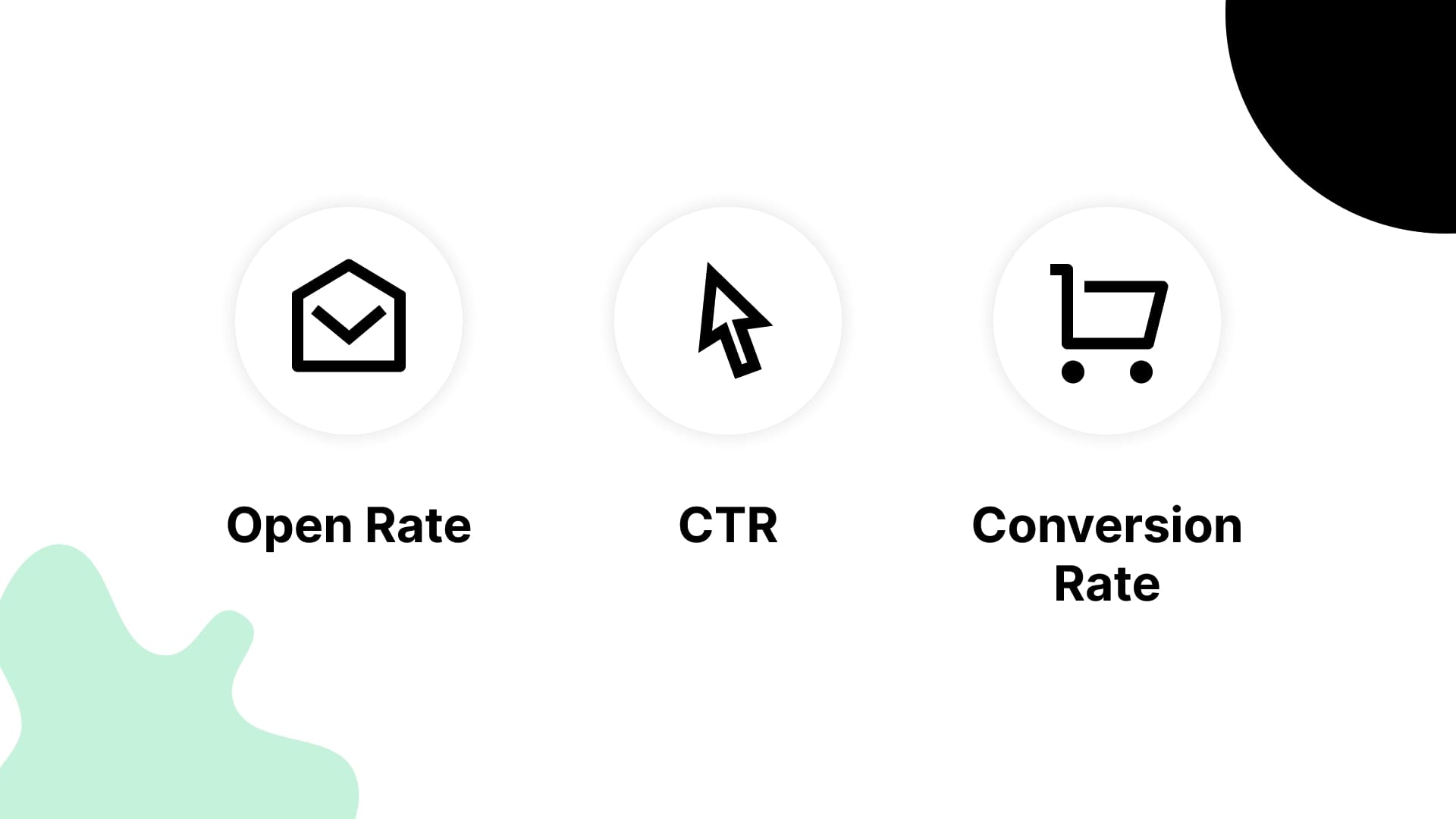
1. Open rate
By monitoring your open rates, you can easily evaluate how well your campaigns are doing with your target audience. A high open rate indicates that your previous emails struck a chord with your subscribers and they’re interested in what your newsletters have to offer.
2. Click-through rate
Click-through rate, or simply “CTR”, measures the number of unique clicks on your campaign per the number of subscribers. If your click rate is high, it means the email content is compelling and your call-to-action is strong.
3. Conversion rate
A conversion is when a subscriber completes the desired action in your newsletter, usually in response to a call-to-action. For example, when someone clicks the link or makes a purchase.
So now that you know what metrics to look for, let me show you how you can improve them.
13 ways to increase email engagement
To improve overall email engagement, you don’t need to overhaul your entire strategy. Just make small adjustments, so you can test and improve your email marketing strategy over time.
Tips to improve open rates
Capture attention with your subject line
The key to a high-quality subject line is relevance. Don’t be tempted to use clever, clickbait-y phrases to get high open rates. It may briefly increase open rates, sure. But eventually the only metric that skyrockets will be your unsubscribe rate.
Your goal is to write descriptive email subject lines that are clearly relevant to your target audience – not disappoint them as soon as they open your newsletter.
Take these two subject lines for example:

The first makes outlandish, too-good-to-be-true claims, while the second tells the reader exactly what value they’ll get by opening the newsletter.
More ways to write subject lines that boost open rates:
- Include a number – Data shows that email subject lines using numbers generate higher email engagement than those that don’t.
- Consider mobile display – Keep your subject line under 40 characters to ensure it’s readable on every device.
- Generate FOMO – Let readers know that your offer is limited or has an expiration date to compel them to open.
- Test emojis – Depending on your audience emojis can help or hinder open rates. While some industries can see a slight drop in open rates when using emojis, others see an increase of as high as 11.47%.
- Add a call-to-action – Give a clear directive to readers that will help them take action. Like this example from custom packaging supplier, Packhelp: “Become a packaging designer 🎨”
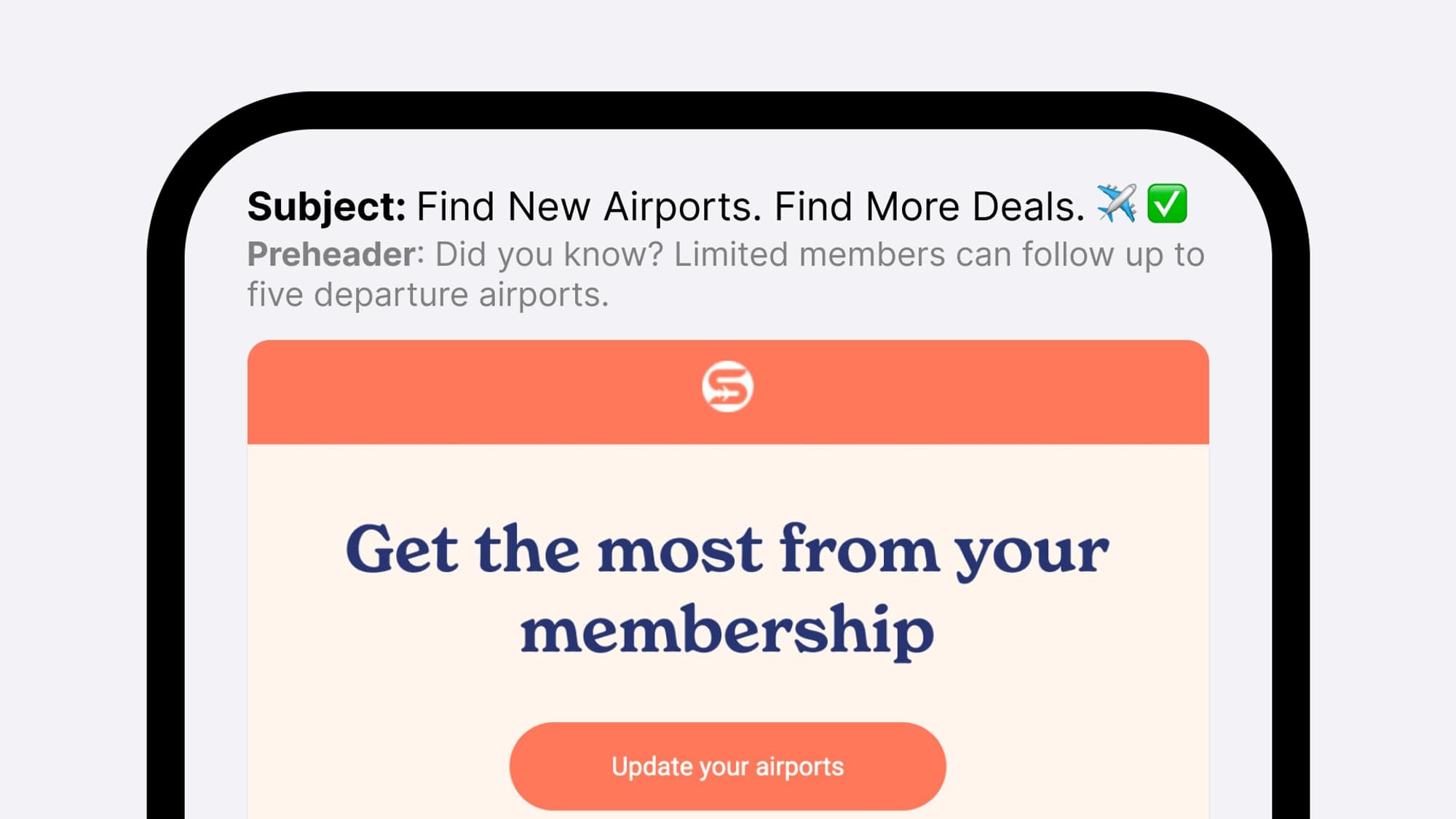
Utilize your email preheader
The email preheader is the first line of text that appears next to the subject line in your recipient’s inbox and it’s the chips to a subject line’s guac. Preheaders are perfect for further solidifying expectations by highlighting your value proposition.
On mobile devices, your email preheader text is often more prominent than the subject line. So don’t let this prime inbox real estate go to waste.
Here’s an excellent example from daily business newsletter, Morning brew:
Subject - ☕️Second richest
Preheader - Move over Bezos, there's a new billionaire in town…
The subject line on its own gives no indication of what the newsletter contains. But paired with the preheader, piques interest and entices you to engage with the email.
Perfect email cadence
There’s no one-size-fits-all schedule when it comes to email cadence. Every email marketer has a unique audience and offers a variety of newsletter content. Take these factors into account to determine the email marketing frequency that works best for you.
The easiest way to determine how often your subscribers want to receive emails is simple. Just ask!
Email surveys and email preference centers are an excellent way to let subscribers choose how often they receive your email campaigns. By letting your subscribers customize their subscriptions, you can send with confidence and improve your email engagement metrics.
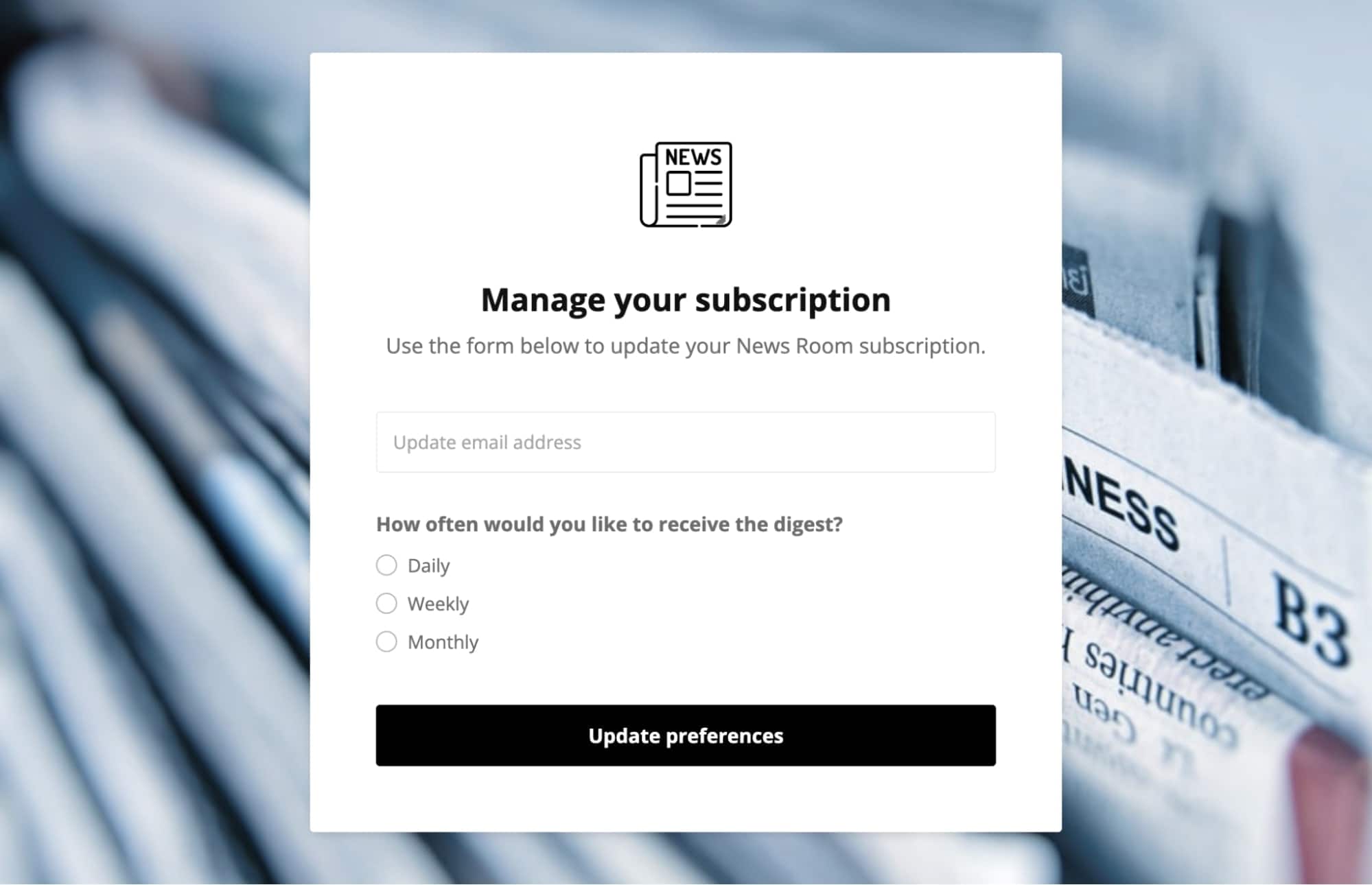
Optimize send times
Choosing the right time to send your email newsletters is finding the time that subscribers have the mental space to read them.
The most popular time among email marketers to send emails is Tuesday, closely followed by Thursday. However, the weekdays with the highest number of opens are Wednesday, closely followed by Monday.
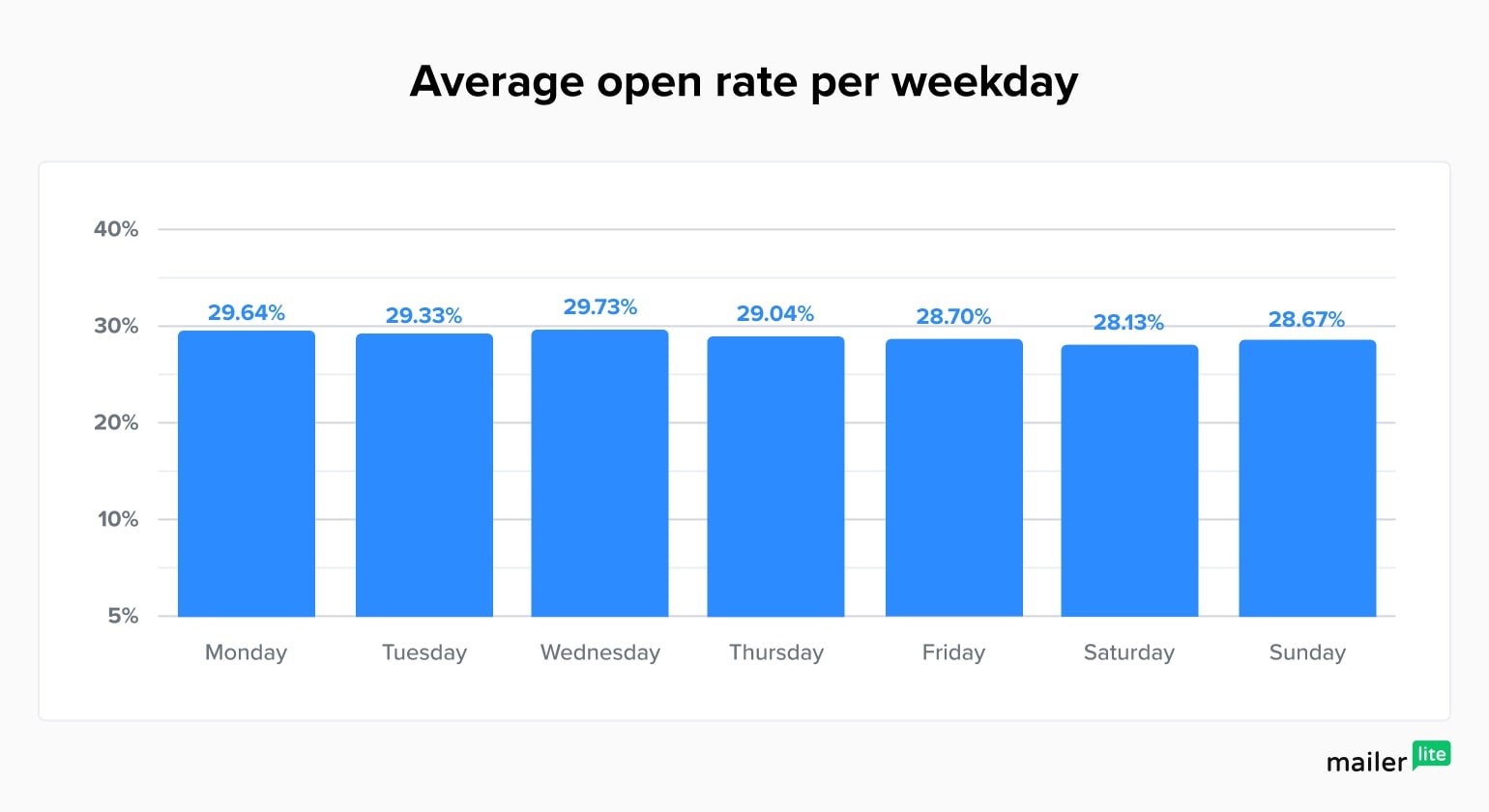
As for what time to send your email, there are two peak periods in which you can generate the most opens. That’s 10AM – 12PM and 5PM – 6PM, regardless of what day of the week it is.
Provide high-quality content
Even if you have the most irresistible subject line and preheader delivered at the most optimal time, you’re only as good as your last email. If you don’t deliver value in your newsletter content, subscribers won’t bother opening the next one.
Let’s take a look at this announcement email example from specialty food and supplement brand, Perfect Keto.
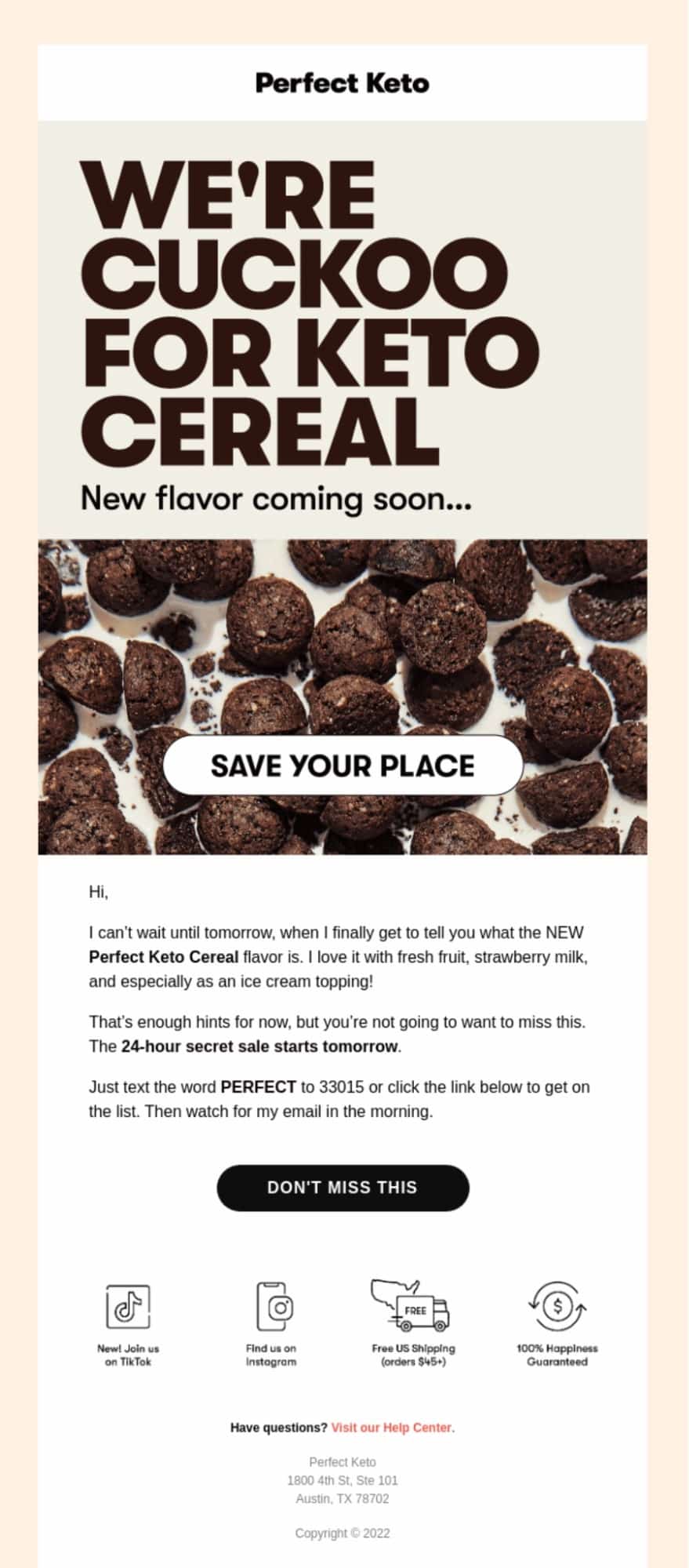
At first glance, you immediately know what this email is about. They sprinkle in some mystery to spark curiosity in their readers: “I can’t wait until tomorrow to tell you what the new Perfect Keto Cereal flavor is”. By doing so, they create urgency by promoting a 24-hour secret sale, and generate FOMO with phrases like: “You’re not going to want to miss this.”
The fonts and colors used in their newsletter design are consistent with the branding throughout their website. This newsletter approach builds trust. Subscribers know that when they open the next Perfect Keto’s newsletter, they’re going to get value from it without any additional effort on their part.
Tips to improve click-through rates
Use segmentation to target subscribers
I’ve said it before and I’ll say it again. Relevance is key to increasing email engagement. And the best way to ensure relevant content is being delivered to the right audience, is by using segmentation.
Segmented email campaigns have been shown to deliver 14.32% higher open rates and 54.79% higher click-through rates than non-segmented campaigns.
Encourage social sharing
Social sharing is when you include sharing links in your newsletter, so that subscribers can share your newsletter on their social media platforms.
They’re usually included as simple icons in the header or footer of an email newsletter. But don’t underestimate these tiny buttons. Emails that include social sharing buttons have a click-through rate 158% higher than those who do not.
Include interactive content
Interactive content is a simple and effective way to increase email engagement. People are encouraged to click, it’s fun, and they get an immediate benefit in return. To make your email interactive, you can include:
- Videos – People love videos. Probably because they’re easier to consume and process than long form articles. This is why newsletters with embedded videos have a click-through rate 3x higher than those that don’t.
- Embedded surveys – The key to embedded surveys and quizzes is to keep them short and sweet. It should be easy to complete, and not feel like a chore.
Write an irresistible CTA
The call-to-action (CTA) is the climactic point of your email. Your subject line and email content build towards this point, empowering subscribers so they’re ready to engage with your email when they see that big button.
There are a few rules when it comes to making a winning CTA:
- Make it easy to spot – Your CTA should stand out from the rest of your email text. Ideally, a big button with a contrasting color.
- Give subscribers a clear directive – The CTA text should tell subscribers exactly what they’re doing by clicking the button. E.g “Sign up now”, “Read more”, “Download free checklist”.
- Use positive verbs – Instead of negative action words like “Don’t miss out” use positive words like “Get started now”, “Try for free”, “Find out how”, etc.
Here’s a great example from Packhelp. Their CTA “I want to design” is empowering, unique, positive and relevant to the newsletter content.
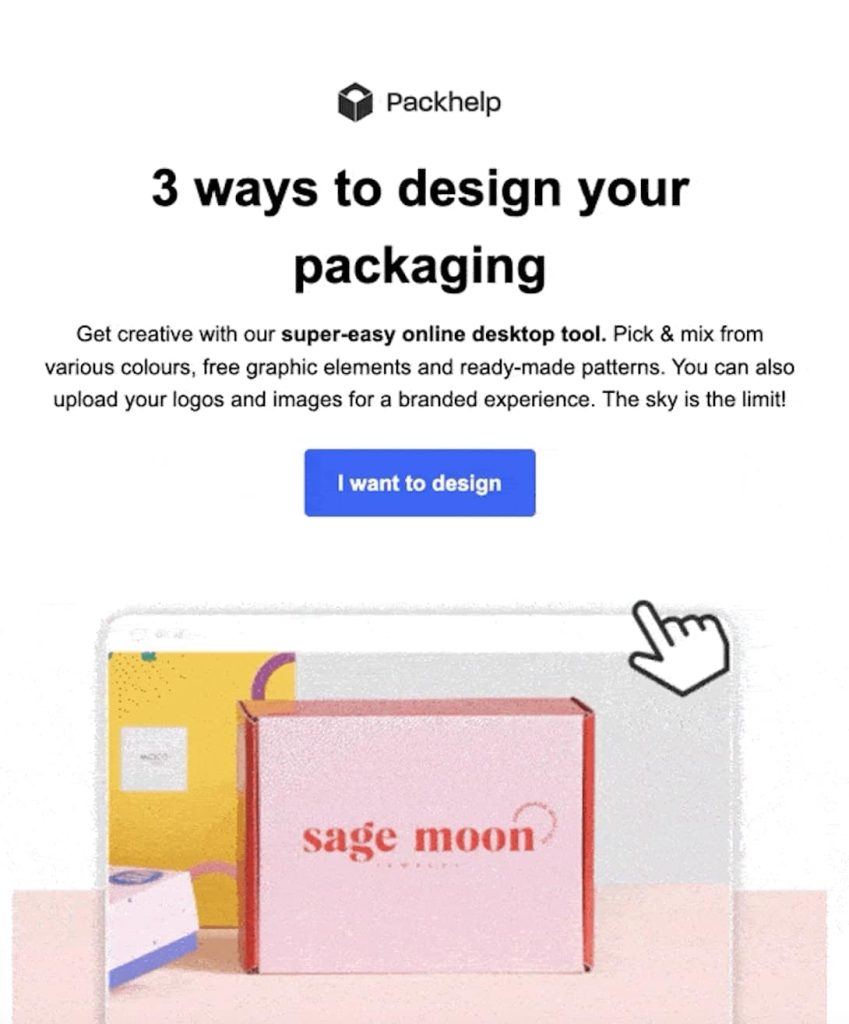
Tips to improve conversion rates
Offer coupon codes
Everybody loves a deal, and thanks to coupons and discount codes, 38% of consumers have spent more than they would have without them. People often add more to their cart when they have a coupon code, because they feel like they’re saving money.
This doesn’t mean you should start dropping coupon codes in every email, the golden rule with coupons is: Less is more.
The best time to send coupon codes to maximize email engagement are:
- Around a special event or limited-time sale (Black Friday and Cyber Monday, Boxing Day, EOFYS, etc)
- In abandoned cart emails to encourage the customer to finish checking out
- Welcome emails
Here’s a great welcome email example from natural hygiene brand, Wildist. New subscribers who sign up on the website are immediately offered 15% off to encourage them to make their first purchase.
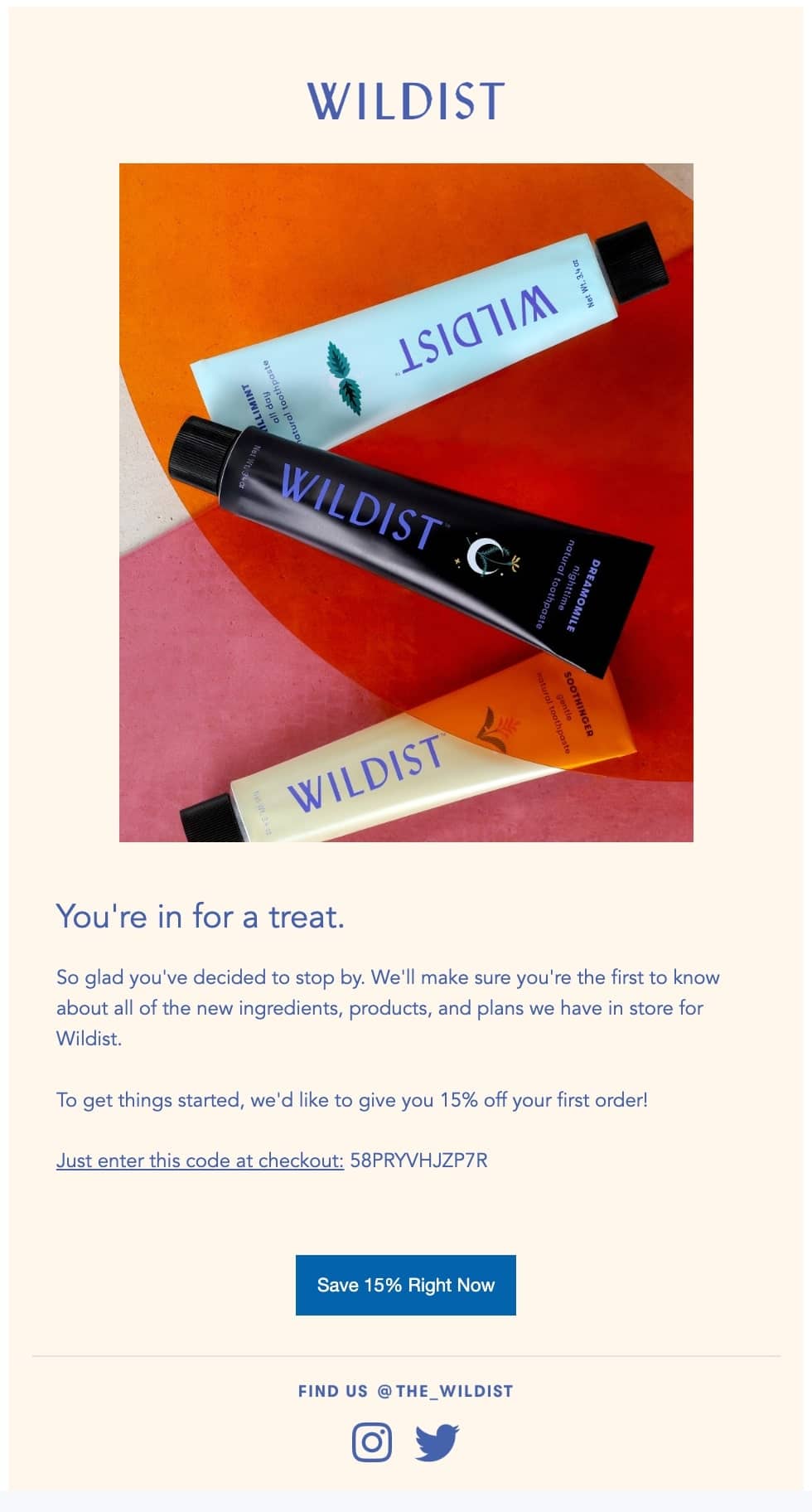
Share customer testimonials
Including customer testimonials in your email newsletters is the perfect tool to provide social proof.
In the same way that you’re more likely to pick a crowded restaurant over an empty one, social proof is the psychological phenomenon where people are more motivated to buy something when they see that other people have done it first.
The proof is in the pudding. 93% of potential buyers read online reviews first before deciding whether or not to engage with your email.
Surreal Cereal Co. takes a tongue-in-cheek approach to sharing customer testimonials, by playfully accusing a customer of slander by saying their berry cereal tastes like unicorns.

Include social media blocks
Social media blocks in your newsletters are another way to provide social proof to potential customers. Instead of written testimonials, you can often show subscribers real customers, or influencers, using your product or service in real life. There’s more than one benefit to including social media blocks in your email campaigns:
- They drive traffic to your profiles. More followers = more authority.
- They take up less space than written testimonials.
- Consumers are 6x more likely to purchase from a product page that includes pictures from social media.
Menswear brand, Spring, includes a social media block in their newsletter linking to their Instagram to promote the products that subscribers are seeing in their feeds.
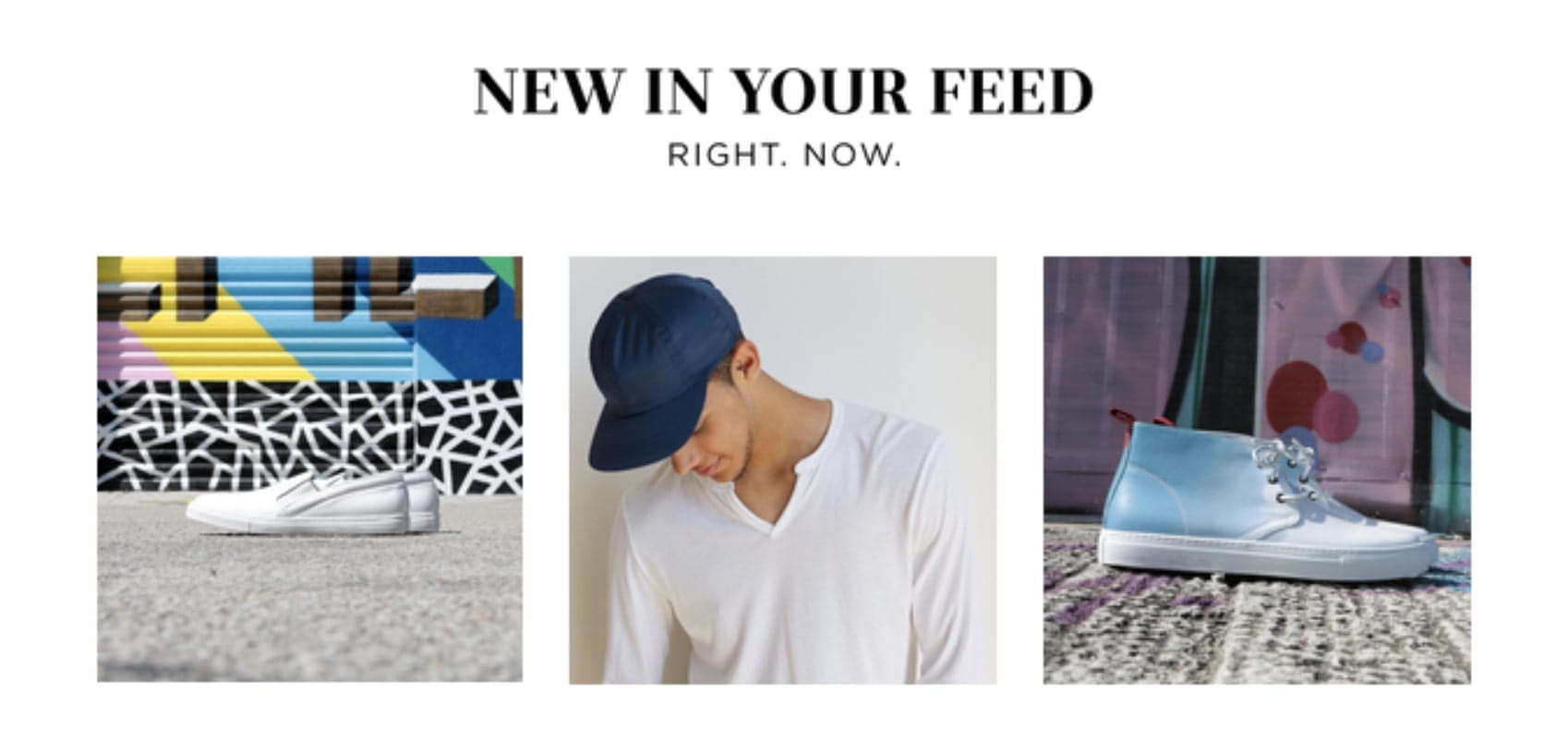
Leverage abandoned cart emails
Studies show that approximately 71.4% of online shopping carts are abandoned. Let’s simplify that and say that 7 out of 10 shoppers don’t complete their online purchases. Instead of calling it quits and considering it 7 lost sales, see it as 7 opportunities to reach out and convert those customers.
Abandoned cart emails help curb lost sales, but you have to get creative if you want to stand out from the crowd.
Use a creative, attention-grabbing subject line, clean email design and, to sweeten the deal, you can add an extra incentive such as free shipping or a discount coupon. After all, 48% of abandoned carts are deserted due to extra costs being too high (shipping, taxes, etc).
Take a look at this example from juice company, Pulp & Press. They included consistent and colorful branding, a 30% discount offer, urgency by pointing out it’s a limited-time sale and glowing customer reviews.

Utilize your transactional emails
Email engagement doesn’t have to end with the sale. Transactional emails have the second-highest open rates (after welcome emails). But they’re usually just a plain white receipt or confirmation with very little creativity or flare.
Take advantage of this opportunity to build stronger relationships, cross-promote other products and strengthen your brand identity.
MeUndies doesn’t sleep on their transaction emails. Take a look at this shipping confirmation. No one can deny the flare here. It’s colorful, light-hearted, funny and promotes their refer-a-friend-program to engage subscribers and push more conversions.

How to keep it going
1. Let subscribers decide with A/B split tests
A/B testing is the method of sending and comparing two different versions of a newsletter to see which one performs better, using a sample of your audience.
Split tests are the most important tool in your email marketing belt when it comes to increasing email marketing engagement. You’re able to take all the strategies outlined in this article. Then test, test and test again, improving your approach with each iteration.
2. Re-engage inactive subscribers
Having a bunch of inactive subscribers on your list doesn’t necessarily mean you’re doing anything wrong. People are busy, people lose interest, and there will always be someone on your list who doesn’t interact with your emails.
Win back inactive subscribers with a re-engagement campaign. All you have to do is select subscribers that haven’t opened or clicked your emails in a certain time frame (6 months is a safe bet) and send them an email to remind them why they love you.
3. Keep your email list clean
We all attract invalid emails to our subscriber lists. These addresses clog up your email list, decrease your engagement metrics, and can even harm your sender reputation.
The best way to keep your email list clean is by using email verification tools. Email verification tools scan your email list for these dodgy addresses and make it super easy to delete them.
Here are some tools you can use to clean your email list:
You’ve got this!
Increasing your email engagement isn’t rocket science. What might seem like a daunting task, like traversing a mountainous staircase, can be broken down into smaller, manageable steps. Except instead of sweat patches and chest pains, you’re left with a whole lot of knowledge and a solid email marketing strategy that’s ready to grow with you.






